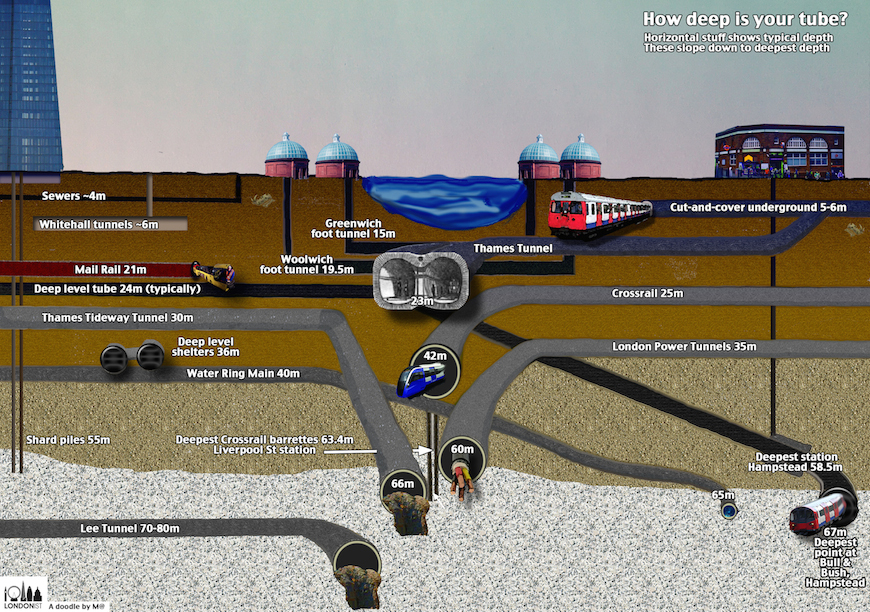Site search:
-
What’s new?
Energy for London Tags
Brent Buildings Camden Carbon Emissions CHP Cities Climate Adaptation Community Heating Community Initiatives Croydon Data DECC Decentralised Energy Distribution ECO Energy Costs Energy Efficiency Enfield FIT Fuel Poverty Funding Green Deal Hackney Haringey Housing Islington Lambeth Library Local Authorities Mayor Newham Ofgem Olympics Photovoltaics Planning RE:FIT RE:NEW Renewable Energy Retrofit Southwark Tower Hamlets Transport Waltham Forest Waste WestminsterEnergy Archives:
- February 2021 (1)
- January 2021 (15)
- December 2020 (15)
- November 2020 (9)
- October 2020 (3)
- August 2020 (5)
- July 2020 (3)
- June 2020 (4)
- April 2020 (10)
- March 2020 (5)
- February 2020 (2)
- January 2020 (3)
- October 2019 (1)
- September 2019 (4)
- August 2019 (2)
- July 2019 (1)
- August 2018 (1)
- November 2016 (8)
- October 2016 (8)
- September 2016 (2)
- August 2016 (8)
- July 2016 (14)
- April 2016 (12)
- March 2016 (16)
- February 2016 (8)
- January 2016 (4)
- December 2015 (1)
- November 2015 (1)
- October 2015 (16)
- September 2015 (3)
- June 2015 (1)
- May 2015 (1)
- April 2015 (1)
- March 2015 (1)
- February 2015 (1)
- January 2015 (1)
- December 2014 (18)
- November 2014 (4)
- August 2014 (8)
- July 2014 (7)
- June 2014 (25)
- May 2014 (8)
- April 2014 (4)
- March 2014 (12)
- February 2014 (7)
- January 2014 (13)
- December 2013 (11)
- November 2013 (15)
- October 2013 (15)
- September 2013 (18)
- August 2013 (5)
- July 2013 (20)
- June 2013 (33)
- May 2013 (8)
- April 2013 (16)
- March 2013 (25)
- February 2013 (14)
- January 2013 (20)
- December 2012 (23)
- November 2012 (23)
- October 2012 (25)
- September 2012 (14)
- July 2012 (12)
- June 2012 (43)
- May 2012 (20)
- April 2012 (8)
- March 2012 (40)
- February 2012 (39)
- January 2012 (40)
- December 2011 (22)
- November 2011 (40)
- October 2011 (33)
- September 2011 (48)
- August 2011 (40)
- July 2011 (58)
- June 2011 (41)
- May 2011 (80)
- April 2011 (38)
- March 2011 (33)
- February 2011 (25)
- January 2011 (24)
- December 2010 (3)
- November 2010 (7)
- October 2010 (6)
- September 2010 (7)
- August 2010 (1)
- July 2010 (2)
- June 2010 (4)
- May 2010 (1)
- March 2010 (3)
- February 2010 (3)
- December 2009 (5)
- November 2009 (2)
- October 2009 (3)
- July 2009 (3)
- June 2009 (1)
- April 2009 (1)
- March 2009 (1)
- February 2009 (1)
- January 2009 (1)
- December 2008 (2)
- October 2008 (1)
- September 2008 (1)
- July 2008 (1)
- March 2008 (2)
- January 2008 (2)
- October 2007 (1)
- September 2007 (3)
- July 2007 (1)
- March 2007 (1)
- February 2007 (3)
- November 2006 (3)
- August 2006 (1)
- February 2006 (1)
- May 2005 (1)
- February 2004 (1)
Search Results for: tunnels
London Power Tunnels latest
October 2015: On Sunday 25 October an electricity transformer, the size of a large truck will be delivered to National Grid’s new Highbury Substation, on Seven Sisters Road, Islington – all part of the major London Power Tunnels Project. More here on this new piece of infrastructure. And more on the London Power Tunnels project here.
The London Power Tunnels project
March 2013: Previous posts have highlighted the significant National Grid London Power Tunnels project currently underway and so interesting to get an update via the following industry news story: “Costain completes tunnel work London Power Tunnels project” which reports:
“Costain said that the dual mode TBM (Tunnel Boring Machine), named Evelyn, broke through a pre-prepared shaft at St John’s Wood in London, following a year-long 7.26km drive from Willesden. The drive is part the National Grid’s plan to rewire London via a 32km network of underground tunnels, in order to meet increasing electricity demand, and help the capital access the renewable energy of the future.” (also see Costain news release)
The tunnels are planned to be very different from those previously constructed – much more accessible in relation to helping fix faults and large enough to walk through.
 From London Tunnels brochure.
From London Tunnels brochure.
Some further info from the project’s website www.londonpowertunnels.co.uk states:
“The next phase of tunnelling operations will see Evelyn journey towards Wimbledon, from Wandsworth. A second TBM, Cleopatra, is carving out the other 13km of the route and is due to arrive at St John’s Wood later this year.”
Update on London Power Tunnels project
May 2012: An update on the London tunnelling project reports that “significant milestones in the construction of three deep level tunnels as part of the London Power Tunnels contract for National Grid” have been reached as part of a project to build new high voltage electricity cable tunnels between Hackney and Willesden (via St John’s Wood) and Kensal Green and Wimbledon. Read the full story here. Further information on the London Power tunnels project can be read here.
National Grid’s London power tunnels project
17 October 2011: “Deep beneath the busy streets of north London, one of the largest engineering projects that the capital has seen in the last 50 years has reached a major milestone…”. Read the full article from The Engineer here.
Further information on this major London energy infrastructure project can be read on this previous post.
London Power Tunnels Project
 September 2011: National Grid report that their “flagship London Power Tunnels project has reached a major landmark with the arrival of a massive Tunnel Boring Machine (TBM) named Cleopatra…the device will this week be lowered into a pre-prepared tunnel shaft at National Grid’s site in Eade Road, Haringey. ” The TBM will start digging the 4 metre diameter St John’s Wood Tunnel – a distance of 8km – at a rate of approximately 120 metres per week.
September 2011: National Grid report that their “flagship London Power Tunnels project has reached a major landmark with the arrival of a massive Tunnel Boring Machine (TBM) named Cleopatra…the device will this week be lowered into a pre-prepared tunnel shaft at National Grid’s site in Eade Road, Haringey. ” The TBM will start digging the 4 metre diameter St John’s Wood Tunnel – a distance of 8km – at a rate of approximately 120 metres per week.
The London Power Tunnels Project involves constructing tunnels deep below ground to carry new high voltage electricity transmission cables (400kV) to supply electricity to London connecting National Grid’s existing substations at Wimbledon, St John’s Wood, Willesden and Hackney. Tunnelling Journal reports that “The tunnel will be lined using a Buchan 6 plate trapezoidal gasketed and bolted ring, each 1.3m long, with muck removed via wagons and from the shaft by High Angle Conveyor” in case you wanted to know. Further information on the London Power Tunnels project – with some useful graphics – is provided in this helpful National Grid brochure.
How Deep Does London Go?
27 October 2015: Great graphic and post on The Londonist website illustrating subterranean London which shows – amongst many other things beneath our feet – the newly constructed London Power Tunnels project.
Posted in News
Leave a comment
“Demand for electricity in London double the rate as elsewhere in the country”
February 2014: The Evening Standard recently covered the London Power Tunnels project (covered in detail in some earlier stories here) , posting a short video setting out the rationale for the project, and route (which runs east-west from Hackney to Willesden, and from Kensal Green down to Wimbledon). National Grid – whose project this is – states that the reason for this investment in new power infrastructure is in part in response to fact that: “Demand for electricity in London is about 20 per cent of the UK total and that’s growing at about double the rate as elsewhere in the country.“
Posted in News
Leave a comment
Deputy Mayor tours National Grid’s new “electricity superhighway”
Energietübbing for Crossrail?
 April 2013: This week’s New Scientist features how “Smart heat is helping building the next energy revolution”. The article (subscription only…) looks how the use of technologies such as combined heat and power (CHP) and heat pumps could help “reverse some of the damaging effects that waste heat from our towns and cities is having on the climate ” – and the use of waste heat from London Underground is also examined:
April 2013: This week’s New Scientist features how “Smart heat is helping building the next energy revolution”. The article (subscription only…) looks how the use of technologies such as combined heat and power (CHP) and heat pumps could help “reverse some of the damaging effects that waste heat from our towns and cities is having on the climate ” – and the use of waste heat from London Underground is also examined:
“As passengers often complain, exhaust heat accumulates in the train tunnels under many of our largest cities. Even on a cold day, temperatures on platforms in the London Underground can reach 20 °C. To harvest that warmth, German companies Züblin and Rehau, together with Arup, have designed a liner for tunnel segments that functions like the buried coils in ground source heat pumps, using the heat generated by engines and braking along with that from the surrounding ground to warm the refrigerant, again by compression. As this transfers the excess energy from the tunnel to the refrigerant, the process also causes the tunnel to cool.”
“The lining – dubbed Energietübbing – was placed into a 54-metre-long stretch of a new high-speed rail tunnel in Jenbach, Austria, to supply the municipal building above with enough heat to completely replace the existing boiler. It is still being optimised, but in its first successful winter it coped with outside temperatures as low as -15 °C. London commuters could soon benefit as well. Crossrail, a railway being constructed under the city, is considering Energietübbing for several segments of the new tunnel, where it too would both cool the tunnel and provide the resulting heat to buildings above.”
A recent question to the Mayor highlights which of the stations on the Crossrail route are planned to integrate heat pump technology to provide waste heat to buildings above. “Out of the twelve oversite development schemes Crossrail is developing only two will not include a capability for using ground source heat pumps. These are at Woolwich and Limmo, where Crossrail is constructing a vent shaft. At these sites a large proportion of the oversite development schemes are not integrated with Crossrail infrastructure. Future owners of these oversite development schemes will however be able to install ground source heat pump technology within the buildings foundations. “
Tube Cooling Update
17 February 2012: Transport for London (TfL) have issued a news release providing an update on measures being implemented to help ‘cool the tube’. The release reports that “At Green Park station borehole cooling technology will be used. London Underground has already successfully drilled wells to source naturally cool water from deep below Green Park and will now install air cooling units that will use the water to cool the Victoria and Piccadilly line platforms.” A similar ground water cooling scheme already operates at Victoria station.
The Mayor’s 2010 Transport Strategy (Chapter 5 – Managing and enhancing the transport system) highlights the challenges in providing ‘coolth’ to the underground:
High tunnel temperatures during the summer months are one of the biggest challenges facing the Tube, particularly for the deep tunnelled sections of the Underground,such as the Victoria line. These are generally closed systems where the major proportion of the energy that enters (for example, train motors) is released as heat, which in turn raises temperatures in the tunnels and on the trains. As a result of increased train service capacity (primarily through higher train frequencies) and reduced journey times (mainly through quicker acceleration and faster maximum speeds), electricity use on the Underground is anticipated to increase by 2020, resulting in more heat being released in the tunnels. This will be exacerbated by increasing passenger numbers and possible increases in air temperature due to climate change.
More recently, the Mayor’s 2011 Climate Change Adaptation Strategy (p104) details that:
London Underground’s aim is to minimise the heat generated by the existing network and planned upgrade of the service, so that further energy is not required to offset the heat that is generated. The interventions to cool temperature increases caused by the line upgrades will also help to manage the higher external temperatures caused by climate change. Optimising the energy efficiency of the service through driving the trains more efficiently will reduce the heating contribution from the operating regime.
Despite these efforts, temperatures on the Underground will continue to be uncomfortable in hot summers … projections suggest that on a summer day by the 2030s, there is a 24-27 per cent probability of temperatures being warmer than 24°C. By 2050s, this rises to 62-75 per cent and 70-91 per cent by 2080s. This compares to 11 per cent probability today.
A recent (2 February 2012) TfL Board Paper (page 21) also provides a summary update on Phase 1 of the Tube Cooling programme.


